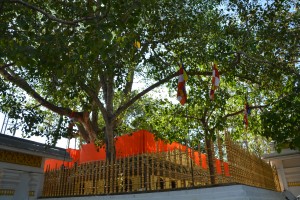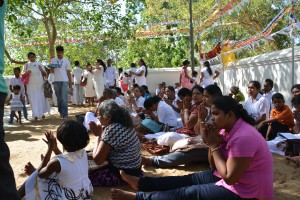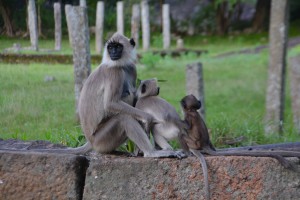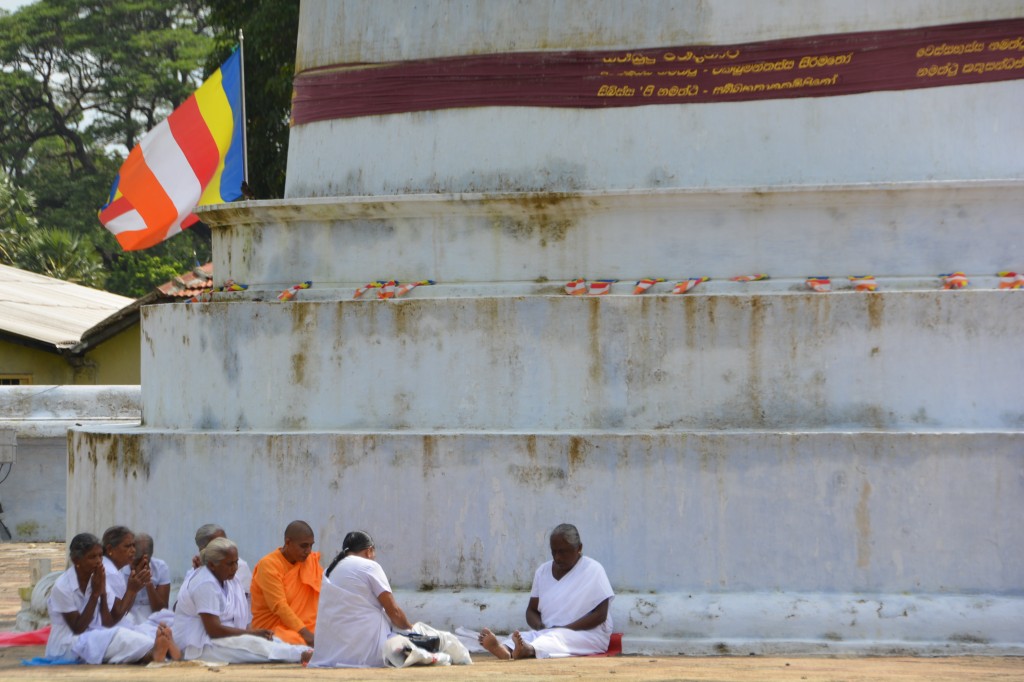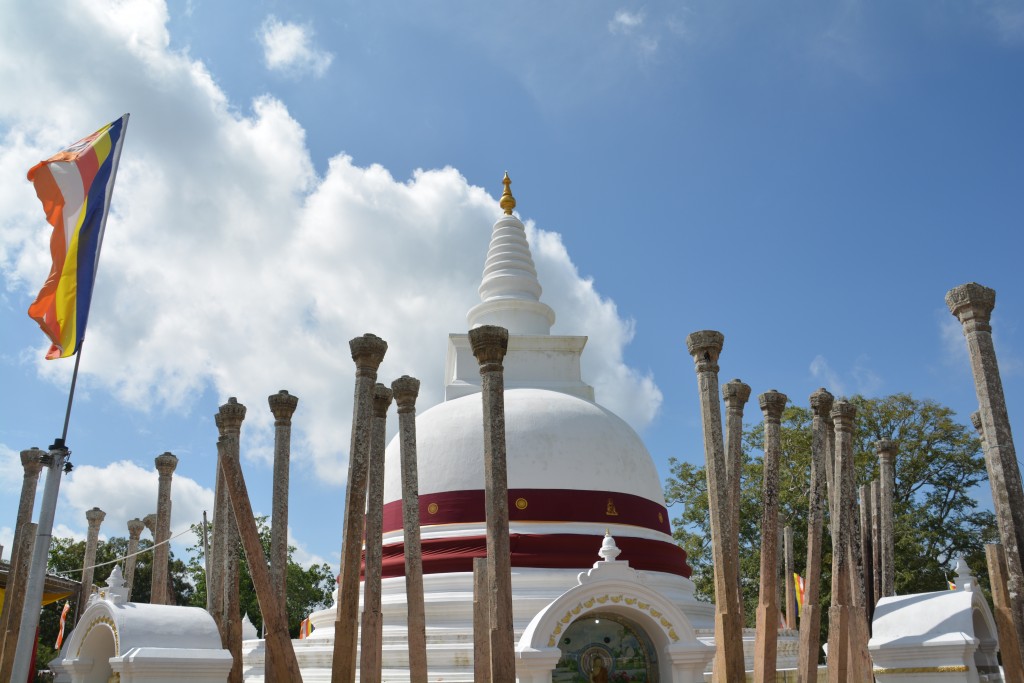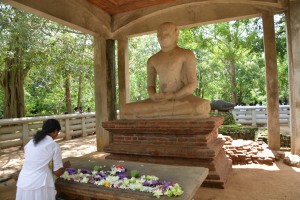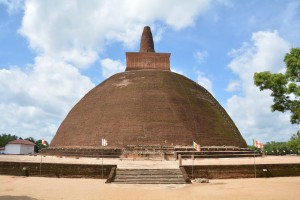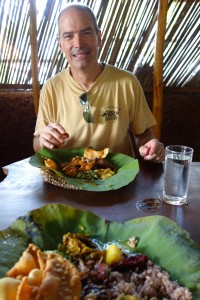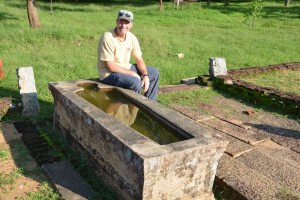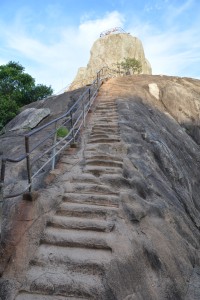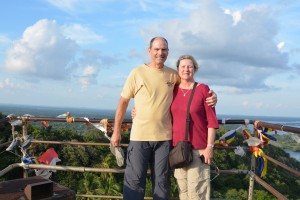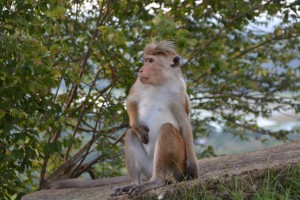Can you say Anuradhapura and Polonnaruwa?
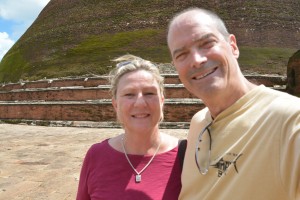
We’re still sparkling at the base of the largest dagoba in Sri Lanka despite a marathon day of culture, history and religion
When it comes to the names of Sri Lanka’s ancient cities they’ve come up with some serious tongue twisters. Much like our driver’s name was shortened to Mr. T, the city names of Anuradhapura and Polonnaruwa – as spectacular as they were – inevitably became known as the A town and the P town. We kept trying but we never got there and eventually gave up. Never mind, call them what you will but they held the biggest surprise for us – amazing civilisations with elaborate buildings going back hundreds of years – or in the case of the A town, back to the 2nd century BC. Now that is seriously ancient.
Anuradhapura is the ancient capital of Sri Lanka, home to the kings for almost 1500 years, although they did get invaded a number of times by the rampaging Indians. Despite the constant challenge to their territory and existence, the long string of kings have left behind a fantastic history in their buildings, infrastructure and culture. Few countries outside of Europe can match it.
With our local guide, who we called Mr. D, we were introduced to this ancient history and our first stop was the Sri Maha Bodhi, the longest living documented tree in the world at over 2,200 years. Yes, there are probably older trees but this tree has been a fundamental part of their religion and culture since before Christ and its entire life since its planting is recorded in their local history.
The scene around this tree was very special, probably our favourite place all day, the most important religious site in the country, surrounded by devout believers who wear white to show their purity and pray under the long sweeping branches of this amazing tree. The strength it brings to the local faithful is obvious by the serene faces on those praying in the tree’s shade. Walking around it was a surprisingly emotional experience and rivaled some of the finest moments we’ve had in observing the Buddhist faith.
But the ancient history of this island is on display in many forms. We visited the massive Ruvanvelisaya Dagoba (a dagoba is the Sinhalese word for a stupa or chedi or zeti or whatever you may call it – basically, the Buddhist temple) which was first built in 2C BC. We walked around this blindingly white dagoba, its outside base lined with hundreds of elephant heads, beautiful flags flying in the warm breeze. A procession of horn-blowing musicians and devotees carrying a long colourful banner over their heads streamed into the complex, ready to add an important religious decoration around the dagoba’s base.
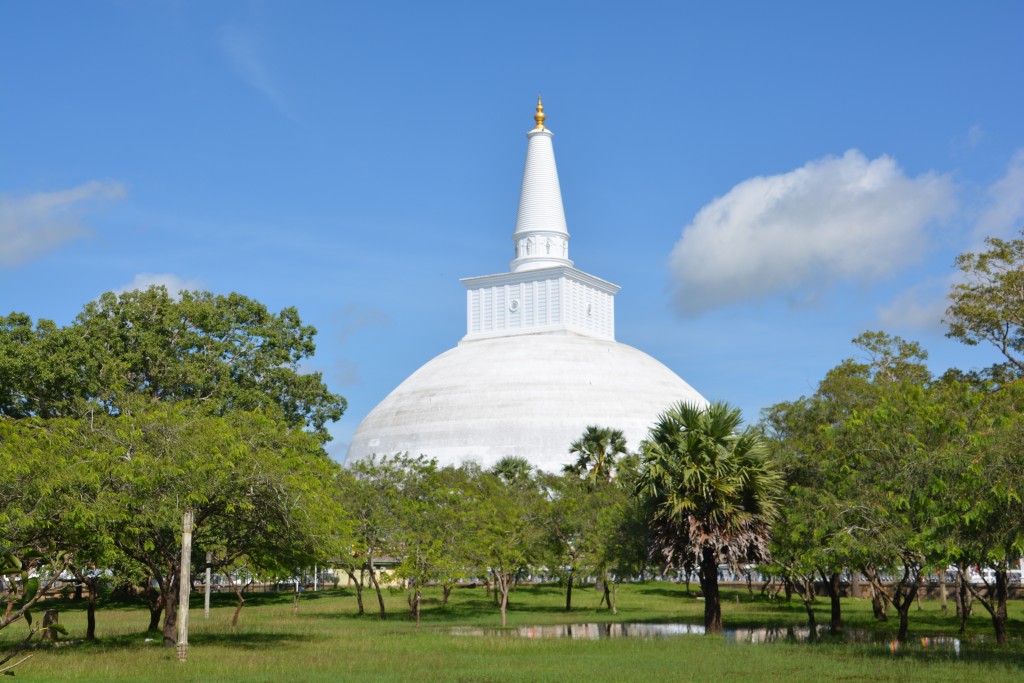
The Ruvanvelisaya Dagoba, originally built over 2,000 years ago, now with grand scale and glaringly white – a huge landmark in the town
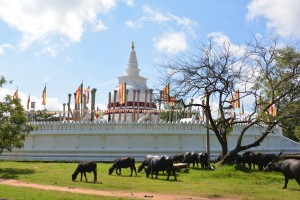
Possibly the oldest dagoba – or chedi or stupa – in the world, now restored amongst it’s original stone columns
But as we’ve seen in other Buddhist countries, they love their dagobas/stupas/chedis. One of the most special in Anuradhapura was the Thuparama Dagoba, memorable for three reasons – first, there was a herd of water buffalo feeding on its surrounding grasses; second, it had 41 of its original 176 granite pillars still standing – although some of them were at jaunty angles – and third, this was the first dagoba built in the country, possibly the world. It was originally built in the third century BC, not particularly big or carrying any special features, just older than any others anywhere. That age will do you head in.
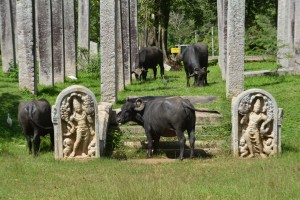
The buffaloes wandered amongst the ruins enjoying the green grass, probably oblivious to the 2,000 year old stones
But wait, there’s more. The punishing heat and the lingering effects of jet lag tried to keep us down but with Mr. D filling us with quickly forgotten history we kept walking between ancient temples. There was the Abhayagiri Dagoba, at 75 metres it is the second highest in the country and at one time housing and feeding up to 5,000 monks. Interestingly this dagoba, like many here, are wider than they are higher, making them look a little squat.
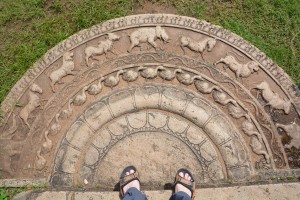
An ancient moonstone dating back over 1,000 years and still used today as a stepping stone to an old temple
We also went to a nearby site which featured one of the best examples of a moonstone. A moonstone is basically a large stone forming a semi-circular first step into an important building. These moonstones feature spectacular carvings of four major animals lining the top line – elephants, lions, buffaloes and horses – with other rows showing geese or other images, adorn the footstep of a 9th century school. We’d never seen anything like these timeless carvings and yet in most cases we could walk across them without any restrictions.
We also visited the Samadhi Buddha, an original fourth century stone Buddha in a meditative pose, a very serene and peaceful place amongst the green grass and wooded area, and had a brief stop at the Twin Ponds, two large pools built at different times to provide water for the monks with a clever filtering system, now full of fish. So there was a lot of stuff to see.
Finally, with only the final twitches of life still in us, we finished the long morning at the Jetavanarama Dagoba, the largest in Sri Lanka and a fitting end to Dagoba Sweepstakes. Absolutely massive, still in its original brown brick facade, we walked around it in respectful (and required) bare feet and no hat, as we’ve done for all religious sites, trying to take in its size and dominance of the area. Originally built in the third century, said that at that time to be the third largest man-made structure in the world after two Egyptian pyramids, perhaps over 100 metres high at that time but reduced during the many destructions and rebuilds it had to endure. Quite overwhelming and definitely worth the effort.
We took a late lunch and a local restaurant quaintly named the House of Taste which featured large lotus leaves for plates, a local buffet, eating with our hands (well, the right hand only), a great experience with the locals and very good curry and rice.
After a well-earned and re-energising swim at the hotel pool we were back out amongst it again to spend the late afternoon at the nearby town with the refreshingly pronounceable name of Mihintale.
Mihintale is another one of these geologic wonders that spring up from nowhere – a volcanic plug mountain standing sentinel amongst endless plains of jungle with the occasional rice paddy field carved out. There is a symbolic religious significance to Mihintale due to a story about how Buddhism came to Sri Lanka at this place but most locals seemed to take the place fairly casually.
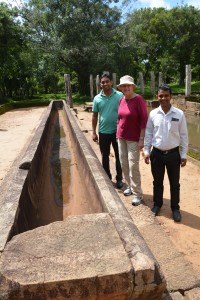
Our driver Mr. T, Julie and our local guide for the day Mr. D stand next to a long trough which was used for preparing rice for the monks
Walking the whole distance would involve 1843 steps – and there were no votes for that option – so we wisely chose to drive to the half way point and started up the gently sloping steps, stopping occasionally at various sets of ruins or to take in the groups of monkeys or glimpse at the expanding view.
As we climbed higher we started to follow an old rusty railing up a bald steep rock with steps roughly carved into the smooth rock face. This tricky little walk with the mandatory bare feet would never have passed the safety test in the risk-averse West but we carefully negotiated the steps until they led us to the top and what is called Meditation Rock. From this summit we had spectacular 360 degree views over the plains below us.
From here we could see the jungle carpet below us, the flooded rice paddies and the smoke from various little fires while listening to the monkeys howling from the trees below and the occasional Hornbill calling out. A huge family of Sri Lankans were just leaving the little flat summit when we arrived so we had this magnificent scene to ourselves. This was easily the highlight of Mihintale for us.
Descending from this lofty point we explored yet another dagoba and came across yet another type of monkey with a cute little page-boy haircut before walking all the way down to the bottom of the hill. The sun was low in the sky, the heat had lost its zip, there were no people around and the hordes of monkeys kept us amused. It was a beautiful and peaceful way to end a frantic day of proud history, deep culture and beautiful temples that formed the foundation of Sri Lanka. Phew!

